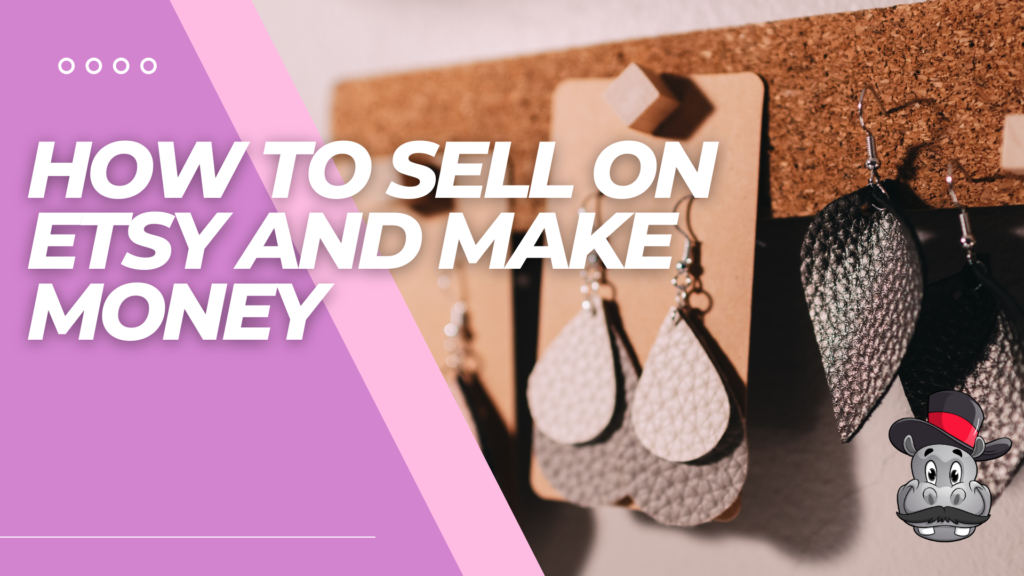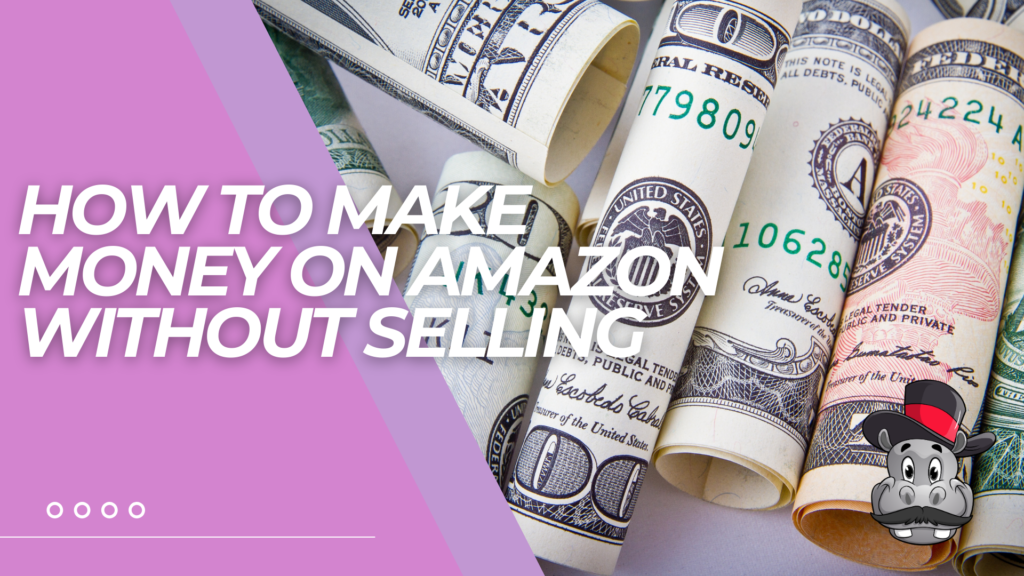This post may contain affiliate links. This means I will make a commission at no extra cost to you should you click through and make a purchase. Read the full disclosure HERE.
Selling on Etsy can be a fulfilling and profitable venture for creative individuals and small business owners. Whether you want to sell handmade crafts, vintage items, or digital downloads, Etsy provides a platform to showcase and sell your products to a global audience. To successfully navigate this online marketplace and maximize your sales potential, there are several key steps and strategies to consider.
First, setting up your Etsy shop is essential. This involves creating an Etsy account, selecting a unique and memorable shop name, and customizing your shop’s appearance to create a cohesive brand identity.
Providing excellent customer service is vital for building a loyal customer base. This includes prompt and clear communication with buyers, ensuring secure and timely shipping, and presenting your products in professional and appealing packaging.
Understanding Etsy’s fees and policies is also important to ensure compliance and avoid any potential issues. Familiarize yourself with the fees associated with listing and selling on Etsy, as well as any specific policies related to handmade items, vintage goods, and intellectual property.
Finally, implementing certain tips and best practices can increase your chances of success on Etsy. These include creating unique and high-quality products that stand out from the competition, utilizing relevant keywords and tags to improve search visibility, actively engaging with the Etsy community through forums and teams, and regularly analyzing your shop’s performance to make informed adjustments.
By following these steps and incorporating effective strategies, you can navigate the Etsy marketplace with confidence and increase your chances of achieving your selling goals.
Key takeaways:
- Setting up your Etsy shop: Begin by creating an Etsy account, naming your shop, and customizing it to reflect your brand identity.
- List and manage your products effectively: Take high-quality photos, write detailed descriptions, set appropriate prices and shipping policies, manage inventory efficiently, and promote your products through various channels.
- Provide excellent customer service: Communicate promptly and professionally with buyers, ensure efficient shipping and packaging, and strive to exceed customer expectations to build a strong reputation and increase sales.
1. Setting Up Your Etsy Shop
Setting up your Etsy shop is the first exciting step towards showcasing your unique creations to the world. From creating your Etsy account to naming and customizing your shop, this section has got you covered. Unleash your creative flair as we dive into the details of each sub-section, guiding you through the process and helping you make a memorable entrance into the thriving Etsy marketplace. So, let’s get started on your journey to successfully selling on Etsy!
Creating an Etsy Account
Creating an Etsy account is the crucial first step to initiate selling on the platform. Here are the simple steps you need to follow:
- Open the Etsy website and locate the “Sign In” button.
- Click on the “Register” button to establish a new account.
- Provide your email address and generate a strong password.
- Select a distinctive shop name that perfectly represents your brand.
- Accept the Etsy Terms of Use and Privacy Policy.
- Confirm your email address by clicking on the verification link sent to you.
- Configure your shop preferences, including language, currency, and shipping address.
- Personalize your shop by adding a captivating banner and shop logo.
- Write a description to introduce yourself and your shop to potential buyers.
- Enhance the visibility of your Etsy shop by linking your social media accounts.
By following these steps, you can effortlessly create an Etsy account and embark on your journey as a seller on this phenomenal platform.
Naming Your Shop
When it comes to naming your Etsy shop, it’s crucial to follow a few steps that will help you select a one-of-a-kind and memorable name that truly represents your brand:
- Start brainstorming: Take some time to think about the type of products you sell and the image you want to convey to potential customers.
- Conduct thorough research: Before settling on a name, make sure to check if any similar shop names already exist. This will help you avoid confusion and stand out from the crowd.
- Opt for simplicity: Choose a name that is easy to pronounce, spell, and remember. This way, customers can easily recall your shop’s name when looking for your products.
- Add descriptive keywords: Incorporating relevant keywords related to your products or niche can make your shop more appealing to your target audience. This will increase the chances of attracting the right customers.
- Think long-term: Consider if the chosen name will still align with your business as it expands in the future. It’s important to select a name that can grow with your brand and remain relevant.
- Seek feedback: Don’t hesitate to ask for opinions on potential shop names from friends, family, or even fellow Etsy sellers. Their feedback can provide valuable insights and help you make a more informed decision.
Always remember that your shop name plays a significant role in establishing your brand identity. It should encapsulate the essence of your business and effectively attract potential customers.
For your Etsy shop, there are numerous possibilities for names. Some ideas include “Crafty Creations,” “Vintage Finds,” or “Handmade Haven.” Take the time to consider which name best reflects your brand and resonates with your target audience.
Customizing Your Shop
Customizing Your Shop allows you to craft a one-of-a-kind and visually captivating storefront that truly embodies your brand. When customizing your shop, it is important to keep in mind the following key steps:
- Choose a visually enticing banner or logo that perfectly represents your brand identity.
- Select a color scheme that harmonizes with your brand and creates a unified look throughout your shop.
- Add a shop announcement to effectively communicate important updates or promotions to your valued customers.
- Create a compelling “About” section that narrates your brand’s story and showcases what makes your products stand out from the rest.
- Organize your shop sections in a way that facilitates easy navigation for customers, helping them find exactly what they are searching for.
- Display high-quality product photos that accurately depict your items and their finest details.
- Enable Shop Updates to keep customers engaged and well-informed about new product launches or exclusive behind-the-scenes content.
- Utilize the “Shop Policies” section to clearly outline your return policy, shipping information, and other important details for a seamless customer experience.
By Customizing Your Shop, you can create a visually captivating and coherent brand image, which in turn makes it simpler for customers to connect with your products. Ultimately, this enhances your chances of achieving higher sales and overall success.
2. Listing and Managing Your Products
Ready to level up your Etsy game? In the section “Listing and Managing Your Products”, we’ll dive into the nitty-gritty of optimizing your shop’s success. From captivating product photography to writing persuasive descriptions, we’ll show you how to stand out from the crowd. Plus, we’ll explore the art of setting prices, managing inventory, and unleashing effective promotional strategies. Get ready to transform your Etsy shop into a lucrative online business!
Photographing Your Products
When photographing your products for your Etsy shop, it’s essential to capture high-quality images that accurately represent your items. Here are some steps to help you photograph your products effectively:
- Set up a well-lit area: Use natural light or invest in lighting equipment to ensure your products are well-illuminated.
- Choose the right backdrop: Use a clean and neutral background to make your products stand out.
- Use a tripod: This will assist you in stabilizing your camera and eliminating any blurriness.
- Focus on details: Take close-up shots to showcase the unique features and craftsmanship of your products.
- Show products in use: Incorporate lifestyle shots to give potential buyers a sense of how your products can be used in everyday life.
- Edit your photos: Utilize photo editing software to adjust brightness, contrast, and saturation to enhance the overall appearance of your images.
- Provide multiple angles: Display different perspectives of your products to give customers a comprehensive view.
- Include accurate measurements: Use props or reference objects in your photos to provide a sense of scale.
- Ensure image consistency: Maintain a cohesive aesthetic by using consistent lighting, backgrounds, and editing styles throughout your product photos.
- Update regularly: Refresh your product photos periodically to showcase new items and keep your shop visually appealing.
Writing Product Descriptions
When writing product descriptions for your Etsy shop, it’s crucial to be informative and engaging to attract potential buyers. Here are some tips to help you create effective product descriptions:
– Showcase the distinct characteristics and advantages of your product.
– Utilize descriptive language and include specific details about the materials, dimensions, and colors used.
– Craft a captivating story or narrative around your product to make it more enticing.
– Strategically incorporate keywords to enhance search engine optimization.
– Provide relevant information about the production process or the way your product is made.
– Maintain a consistent tone of voice that aligns with your brand.
– Don’t overlook the importance of proofreading and editing your descriptions for grammar and spelling errors.
By following these suggestions, you can write product descriptions that grab the attention of shoppers and increase your chances of achieving successful sales on Etsy.
Setting Prices and Shipping
To effectively set prices and handle shipping on Etsy, it is important to follow these steps:
- Research: Conduct thorough research on similar products to determine a competitive price range.
- Cost calculation: Take into account the cost of materials, labor, and overhead expenses when determining the price for your products.
- Pricing strategy: Decide whether you want to position your products as luxury itemswith a higher price point or offer them at a more affordable price to attract a wider customer base.
- Shipping options: Choose the shipping methods you will provide, such as standard, expedited, or international shipping.
- Packaging: Carefully select appropriate packaging materials that will ensure the safe transit of your products.
- Shipping costs: Accurately calculate shipping costs based on the weight and dimensions of your products.
- Product listings: Clearly communicate your pricing and shipping information in your product listings for transparency.
Sarah, an Etsy seller, faced challenges when it came to pricing her handmade jewelry. However, after conducting thorough research on similar products and considering her costs, she made necessary adjustments to her pricing strategy. As a result, she attracted more customers, leading to increased sales and profitability. Additionally, Sarah implemented a free shipping offer on orders above a specific amount. This incentive encouraged customers to purchase more items from her shop, further boosting her success.
Managing Inventory
Managing inventory is a crucial aspect of successfully operating an Etsy shop. Here are some essential steps to efficiently manage your inventory:
| Regularly track your inventory levels to prevent overselling or running out of stock.Organize your products in a logical manner to easily locate and count them.Utilize inventory management tools or spreadsheets to accurately record product quantities and variations.Consider implementing barcodes or SKU numbers to quickly identify and track individual items.Ensure timely reordering of products to maintain sufficient stock levels.Establish a labeling system for your inventory to easily distinguish different products and variations.Conduct regular inventory audits to identify any discrepancies and make necessary adjustments. |
By effectively managing your inventory, you can ensure a seamless operation and deliver a positive customer experience.
Promoting Your Products
Promoting Your Products on Etsy is crucial for attracting customers and boosting sales. To achieve this, there are several effective strategies to keep in mind:
- Create visually appealing product photos that effectively showcase the unique features of your items.
- Craft compelling and informative product descriptions that provide accurate details about your products.
- Optimize your listings by incorporating relevant keywords and tags, making them highly discoverable.
- Entice potential buyers by offering enticing discounts and promotions.
- Engage with your target audience through various channels like social media, blog posts, and email newsletters.
- Expand your reach by collaborating with influencers or bloggers within your niche.
- Participate actively in Etsy forums and communities to establish connections with buyers and fellow sellers.
Remember, consistent and strategic promotion is crucial for standing out in the competitive Etsy marketplace. Don’t hesitate to experiment and adapt your strategies to find what resonates best with your products and target audience. Good luck!
3. Providing Excellent Customer Service
Providing exceptional customer service is key to succeeding on Etsy. In this section, we’ll explore the strategies and best practices for delivering top-notch service to your buyers. From effective communication with buyers to ensuring seamless shipping and packaging, we’ll uncover the secrets to keeping your customers satisfied and coming back for more. So grab your notebook and let’s dive into the world of unparalleled customer service on Etsy.
Communication with Buyers
Communication with buyers is essential for a successful selling experience on Etsy. To ensure clear and timely communication, follow these steps:
- Respond promptly: Reply to buyer inquiries and messages as soon as possible to demonstrate your dedication and professionalism.
- Be polite and friendly: Use a courteous and warm tone in your messages to create a positive impression and establish rapport with buyers.
- Provide detailed information: Make sure to address all questions thoroughly and include any necessary details about your products or shop policies.
- Offer assistance: Be helpful and offer guidance to buyers who may have questions or require assistance with their purchase decisions.
- Keep buyers updated: Regularly update buyers on the progress of their order, such as shipping updates, tracking information, or any potential delays.
Shipping and Packaging
When selling on Etsy, shipping and packaging are crucial aspects of providing excellent customer service and ensuring customer satisfaction. Here are some key points to consider:
- Choose the right shipping and packaging materials to protect your products during transit.
- Ensure that the shipping and packaging method you select is reliable and provides tracking information for both you and the customer.
- Calculate accurate shipping and packaging costs based on the weight and dimensions of your products.
- Package your items securely and properly to prevent damage during shipping and handling.
- Include personalized thank-you notes or small freebies to enhance the customer experience with your shipping and packaging.
- Communicate with your customers throughout the shipping and packaging process and promptly address any issues or concerns that may arise.
4. Understanding Etsy Fees and Policies
Etsy is a popular platform for selling various products, and it is essential to have a clear understanding of Etsy fees and policies to succeed. Here are some important points to keep in mind:
– Seller Fees: It is crucial to familiarize yourself with all the fees Etsy charges, such as listing fees, transaction fees, and payment processing fees.
– Fee Calculations: To effectively manage your costs, you should comprehend how Etsy calculates its fees based on factors such as listing duration, item price, and shipping costs.
– Payment Policies: Take the time to learn about Etsy’s payment policies, including how payments are processed and when you can withdraw your funds.
– Seller Protection Policies: Being aware of Etsy’s policies regarding seller protection, such as cases and disputes resolution, is vital for a smooth selling experience.
– Policy Updates: Stay updated on any changes or updates Etsy makes to their fees and policies. This will allow you to avoid any surprises or disruptions to your business.
By fully understanding Etsy’s fees and policies, sellers can effectively manage their costs and ensure a seamless selling experience on the platform.
Tips for Successful Selling on Etsy
When selling on Etsy, follow these tips for successful selling on Etsy:
- Optimize your shop: Use relevant keywords in your shop name, title, and product descriptions to improve search visibility.
- Create high-quality listings: Include clear and appealing product photos, detailed descriptions, and accurate pricing.
- Promote your shop: Utilize social media, collaborations, and paid advertising to increase visibility and attract potential customers.
- Offer exceptional customer service: Respond promptly to inquiries, provide helpful information, and ensure timely and secure shipping.
A true story about successful selling on Etsy: Janet, a jewelry maker, implemented these tips for successful selling on Etsy and saw a significant increase in sales. By optimizing her shop, creating stunning listings, promoting her products on social media, and providing excellent customer service, she built a loyal customer base and turned her Etsy shop into a thriving business.
Some Facts About How To Sell On Etsy:
- ✅ Etsy offers a low listing fee of $0.20 and only charges transaction, payment processing, and offsite advertising fees when a sale is made. (Source: Our Team)
- ✅ There are no additional monthly fees to sell on Etsy, making it a cost-effective platform for sellers. (Source: Our Team)
- ✅ Etsy provides powerful tools and services to help sellers manage and promote their businesses effectively. (Source: Our Team)
- ✅ Sellers on Etsy can save on shipping by buying and printing discounted postage directly from their Etsy account. (Source: Our Team)
- ✅ Etsy offers marketing tools like social media posts, Etsy Ads, and Offsite Ads to help sellers reach a wider audience and boost their visibility. (Source: Our Team)
Frequently Asked Questions
How do I start selling on Etsy?
To start selling on Etsy, simply sign up for an account on the Etsy website. It’s free to create a shop, and there are no additional monthly fees. Once your shop is set up, you can list your products for a low fee of $0.20 per listing.
What tools are available to help me manage my Etsy shop?
Etsy provides powerful tools to help sellers manage their businesses efficiently. The Etsy Seller App allows sellers to manage orders, edit listings, and respond to buyers from anywhere. Additionally, sellers can save on shipping by buying and printing discounted postage directly from their Etsy account.
How can I reach a wider audience and promote my Etsy shop?
Etsy offers various marketing tools to help sellers reach a wider audience and boost their visibility. Sellers can grow their following and attract new customers through social media posts and advertising tools like Etsy Ads and Offsite Ads. They can also create sales, coupons, or targeted offers to attract more buyers.
What support and education resources are available to Etsy sellers?
Etsy is committed to helping sellers succeed. Sellers can reach out to Etsy support specialists by email or request a phone call whenever they have a question or need assistance. The Seller Handbook provides best practices for running a successful shop, and the Etsy Success newsletter offers tips for improvement. Sellers can also join the Etsy forums and Teams to connect with a community of sellers.
What are the fees associated with selling on Etsy?
When selling on Etsy, there is a low listing fee of $0.20 per item. Sellers only pay transaction, payment processing, and offsite advertising fees when a sale is made. The transaction fee is 6.5% of the item’s total price, and the payment processing fee is 3% plus $0.25 per transaction. Additionally, there is a 15% Offsite Ads Fee for items advertised by Etsy across the web.
Is selling on Etsy secure?
Yes, selling on Etsy is secure. The platform uses SSL encryption to protect sensitive information and secure transactions. Etsy also employs fraud detection systems to prevent fraudulent activity. Automatic deposits and seller protection further enhance the security of selling on Etsy.





Pingback: How To Make Money Without Social Media - Hippo Dollar
Pingback: How To Make Money On Amazon Without Selling - Hippo Dollar
Pingback: Using Chatgpt To Make Money | Hippo Dollar
Pingback: 11 Creative Ways Graphic Designers Can Make Money Online | Hippo Dollar